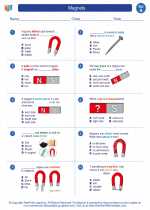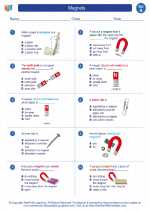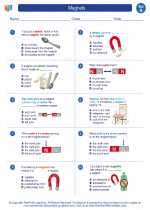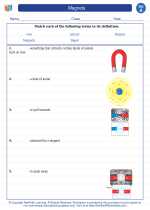Nickel
Nickel is a chemical element with the symbol Ni and atomic number 28. It is a silvery-white lustrous metal with a slight golden tinge. Nickel belongs to the transition metals and is hard and ductile. It is commonly used in the production of stainless steel, magnets, and coins.
Properties of Nickel
Nickel has several interesting properties:
- Metallic: It is a good conductor of electricity and heat.
- Magnetic: Nickel is magnetic at room temperature.
- Corrosion-resistant: It resists corrosion and is often used as a protective layer for other metals.
- Ductile: It can be drawn into thin wires without breaking.
- Hardness: Nickel is a relatively hard metal.
Uses of Nickel
Nickel has a wide range of industrial applications:
- Stainless Steel Production: Nickel is a key component of stainless steel, providing strength and corrosion resistance.
- Magnets: Nickel is used in the production of magnets, including those used in electric motors and generators.
- Coinage: Some countries use nickel in their coins, often in combination with other metals.
- Catalysts: Nickel is used as a catalyst in various chemical reactions.
- Batteries: Nickel is found in rechargeable batteries, such as nickel-cadmium and nickel-metal hydride batteries.
Study Guide
To learn more about nickel, consider the following study guide:
- What is the chemical symbol for nickel?
- Describe at least three properties of nickel.
- Explain two industrial uses of nickel.
- Discuss the significance of nickel in stainless steel production.
- Research the environmental impact of nickel mining and usage.
These questions will help you understand the basic properties and uses of nickel, as well as its impact on industry and the environment.
[Nickel] Related Worksheets and Study Guides:
.◂Science Worksheets and Study Guides First Grade. Magnets
Study Guide Magnets
Magnets  Worksheet/Answer key
Worksheet/Answer key Magnets
Magnets  Worksheet/Answer key
Worksheet/Answer key Magnets
Magnets  Worksheet/Answer key
Worksheet/Answer key Magnets
Magnets  Vocabulary/Answer key
Vocabulary/Answer key Magnets
Magnets 

 Worksheet/Answer key
Worksheet/Answer key
 Worksheet/Answer key
Worksheet/Answer key
 Worksheet/Answer key
Worksheet/Answer key
 Vocabulary/Answer key
Vocabulary/Answer key

The resources above cover the following skills:
PHYSICAL SCIENCE (NGSS)
Waves and their Applications in Technologies for Information Transfer
Students who demonstrate understanding can:
Plan and conduct investigations to provide evidence that vibrating materials can make sound and that sound can make materials vibrate.
Use tools and materials to design and build a device that uses light or sound to solve the problem of communicating over a distance.